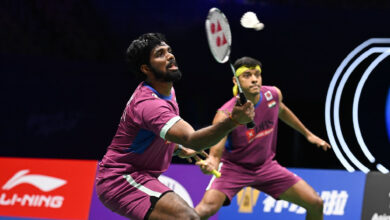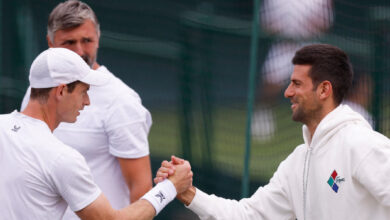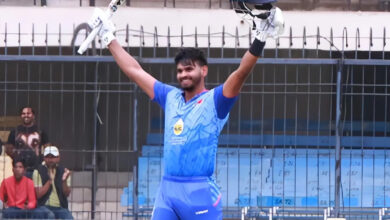Vinicius and De Bruyne UCL strikes part of a bigger picture?

the time Eduardo Camavinga breezed with the ball stuck to his feet from deep inside the Real Madrid half to the opposition box, Manchester City had completed over 300 passes, had almost three quarters of the possession and hit all the six shots witnessed in the Champions League semi-final tie so far. So when Vinicius Jr. received the ball in the inside left channel, some 20 yards out from goal, not many would’ve pictured the goal coming with four City defenders and a goalkeeper standing between. Speaking in football science terms, it was a shot from a position of low Expected Goals (xG) rate. 0.06 out of one. That was the probability of the ball ending in the back of the net. It gets better.
But first, what determines the xG? The dance from the goal, is it a one-vs-one chance, the ass, the angle of the cross/pass, the type of chance, the passage of play in the lead up to the goal and if the ball rebounded off an initial shot.
So, all things considered, when Ilkay Gundogan teed up with Kevin De Bruyne outside the box at the north end, there was a 0.05 out of one chance for the Belgian to equalize, with seven Madrid defenders and a pretty visible Thibaut Courtois in between. And equalize he did. Two strikes from outside the box in less than 45 minutes of play time in a knockouts tie. It’s not a first for the sport and not the last either. The future of football requires footballers who can score goals in less space and time, believes UEFA A Licensed Coach David Garcia. He draws a picture of the future of the game for The Indian Express.
“I believe that both teams and individual players will have to improve their ability to score from farther dances,” Garcia tells. “We will see professional academies value ball-striking much more which will result in players, regardless of position, being able to score from anywhere. This will mean that teams cannot simply sit in with eight or nine players in the penalty area because they will have to step out to defend long shots.”
It’s a dynamic cycle, “The more they step out to defend, the more spaces there will be in the penalty area which means different scoring options. It’s a cat and mouse game. Defending teams defend deep, attacking teams score from far out. So defending teams step out and attacking teams can play through. Over time I believe there will be a greater variety of goals scored.”
“This is logical,” believes Garcia. The heavy traffic of defenders inside the box when Vinicius and De Bruyne took their shots is a usual sight in games with high stakes as the one Bernabeu witnessed this past week. “From what I have observed over the course of the last 10 years, is how well teams defend spaces,” says Garcia. “Not to mention, how well prepared players are to cover larger spaces in a shorter time. All of this leads to teams defending the ‘golden zone’, the area of high percentage Expected Goals in the penalty area, more heavily. I think as a sport, we have learned that to win knockout style competitions, like the World Cup or Champions League, you cannot give up goals so we see incredibly effective defending in those tournaments.” And so, the space available outside the box became a viable option last week, as it does in most tight games, and one that was utilized with precision strikes. The big keyword here being, precision.
The chances are less in games as big but when they arrive, the proficiency of shots determines the final scoreline. Madrid and City are proof of this. In the last year the eventual champions would trail until the 90th minute, with less than half shots on target as opposed to City, but made most of the three shots they took to carve off a 3-1 win on the night. City on the other hand, trailing just one goal on aggregate and with a larger share of the ball, could only convert one of the ten shots they had on target that night. Two of them from inside the six yard box.
Trends from the World Cup also display a fall in the average number of shots per possession from 0.20 in 1970 to almost 0.13 in 2022.
Does it then mean that teams such as Pep Guardiola and Co, who lay heavy emphasis on passing and keeping the ball to create chances, risk losing momentum in big tournament games as they have on quite a few occasions in the Champions League over the past few seasons? Garcia believes it has to do with the way teams train these days. Drills such as Rondos and positional games that don’t provide players with muscle memory to utilize in the final third given the tight markings.
“They are no longer a sufficient training method alone to prepare players for the demands of the game,” he believes. “The space around the penalty in modern football is so tight that players need to become extremely proficient in this moment of the game. Traditional rondos and positional games often are used non-directionally, which means that there is no one direction that the possessing team is attempting to advance the ball, they simply try to keep the ball. This is a problem because training needs to prepare players to possess always with the intention of moving the ball forward and scoring. I suggest the coaches I work with is to modify rondos and positional game to incorporate a direction so players become used to always looking to exploit space to go forward and score.”







